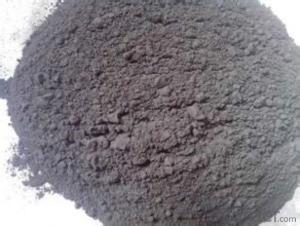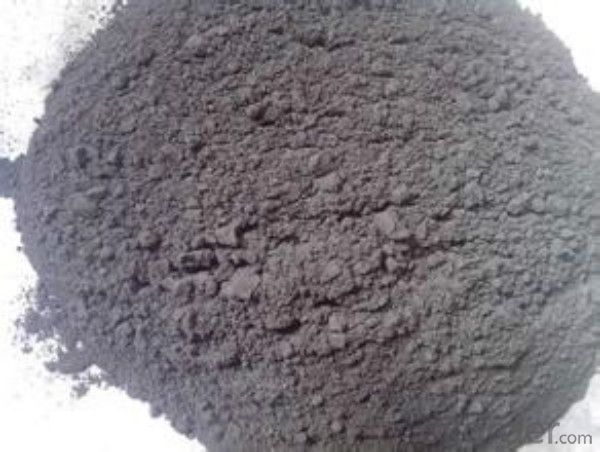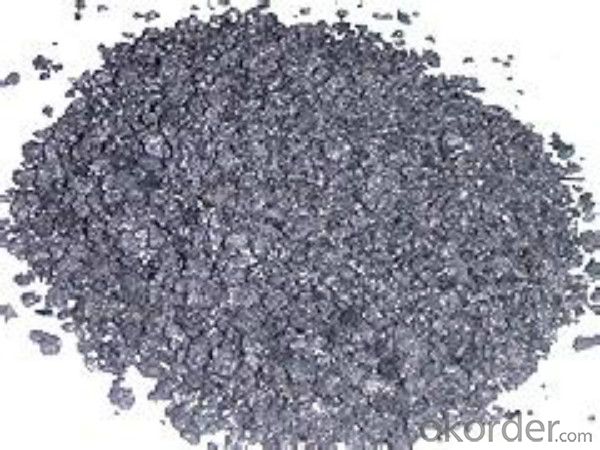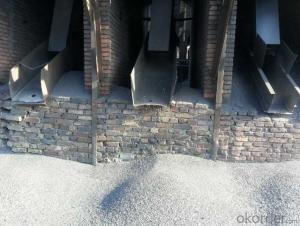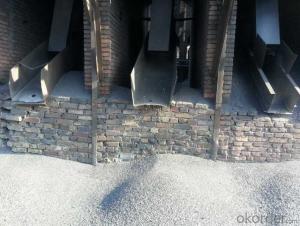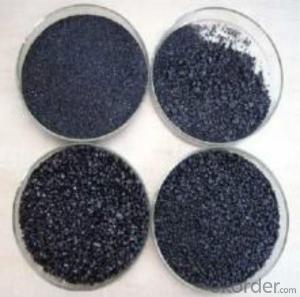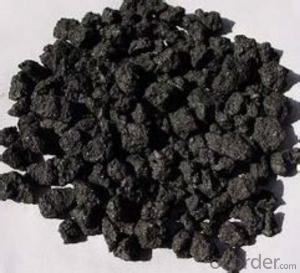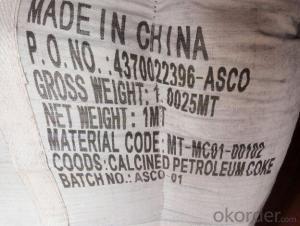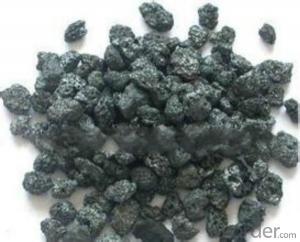FC 98.5% Calciend Petroleum Coke for Steelmaking
- Loading Port:
- Tianjin
- Payment Terms:
- TT OR LC
- Min Order Qty:
- 20.3
- Supply Capability:
- 2030 m.t./month
OKorder Service Pledge
OKorder Financial Service
You Might Also Like
Brief introduction
Calcined Petroleum Coke comes from delayed coke which extracted from oil refinery. Although this product contains a little bit higher level of sulfur and nitrogen than pitch coke, the price advantage still makes it widely used during steel-making and founding as a kind of carbon additive/carburant.
It is playing more and more important role in the industry.
Features
Our product has follwing advantages:
The morphology, chemistry and crystallinity of recarburisers
have a major impact on the overall casting cost. The combined
application and cost benefits, which are derived through the
use of Desulco, enable foundries to manufacture castings in a
highly cost effective manner.
reduces
Recarburiser consumption
Power consumption
Inoculant consumption
MgFeSi consumption
Furnace refractory wear
Scrap rate
Tap to tap time
Slag inclusions risk
Chill
increases
Casting microstructure
Productivity
Process consistency
Specifications
Products | CPC | ||
F.C.% | 98.5MIN | 98.5MIN | 98MIN |
ASH % | 0.8MAX | 0.8MAX | 1MAX |
V.M.% | 0.7 MAX | 0.7 MAX | 1 MAX |
SULFUR % | 0. 5MAX | 0. 7MAX | 1MAX |
MOISTURE % | 0.5MAX | 0.5MAX | 1MAX |
Pictures
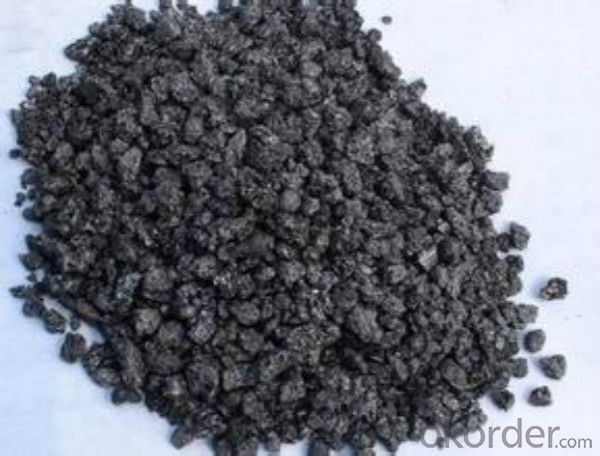
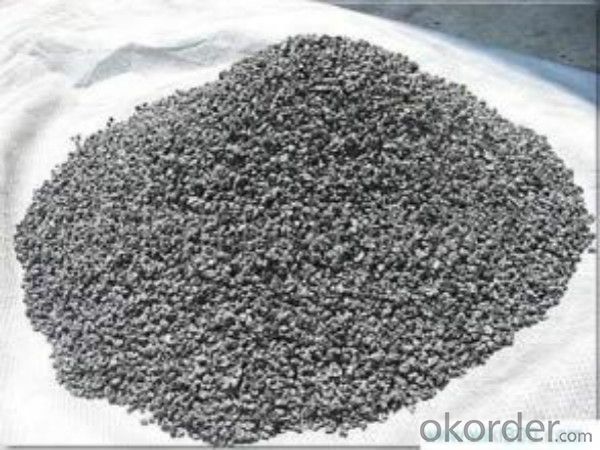
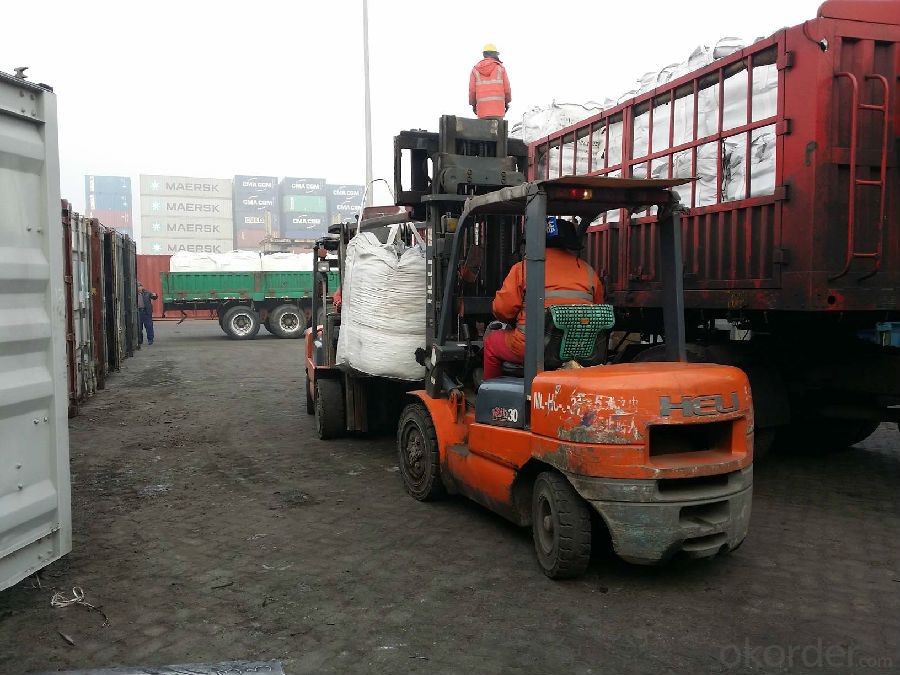
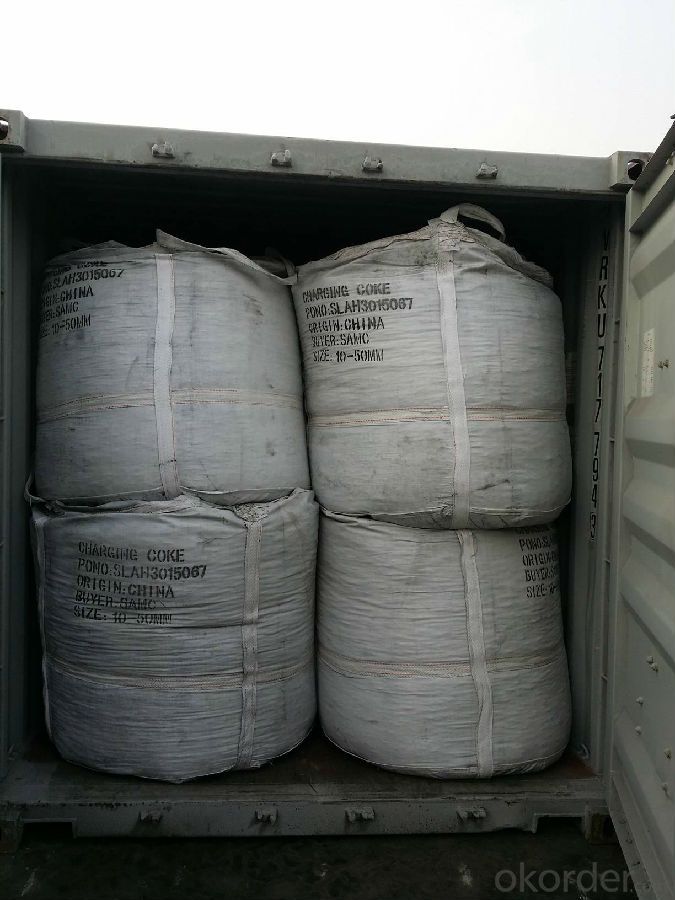
FAQ
1 What is the package?
In jumbo bag with/without pallet
2 What is the delivery time?
25 days after receiving the workable LC or down payment
3 What is the payment term?
T/T, L/C,D/P,D/A
- Q: What can light hydrocarbon carbon five be packed with?
- The stove is rated 1000 + 200Pa, outdoor transmission and distribution pipe network according to the number of users determine the diameter of the smallest diameter, 108mm diameter, maximum diameter 325mm, are made of seamless steel pipe or special gas PE pipe, outdoor pipe network by welding or hot melt connection method, the indoor pipeline for galvanized pipe, mainly adopts threaded connection. The design and construction are the same as that of the natural gas pipeline network. If the natural gas is replaced, it can be butted with the natural gas pipe mouth, and the indoor and outdoor pipe network need not make any change.
- Q: How is carbon used in the manufacturing of electronics?
- Carbon is used in the manufacturing of electronics in various ways. One common application is in the form of carbon nanotubes, which are used to make smaller and more efficient transistors. Carbon is also used as a component in lithium-ion batteries, providing high energy density and longer-lasting power. Additionally, carbon is used as a conductive material in circuit boards and as a protective coating to prevent static electricity buildup.
- Q: What is carbon black filler?
- Carbon black filler, a commonly utilized additive in the production of rubber and plastic products, is derived from the incomplete combustion of hydrocarbons, such as oil or natural gas. It takes the form of a fine, powdery substance and is primarily composed of elemental carbon, with trace amounts of hydrogen, oxygen, and sulfur. The primary objective of incorporating carbon black filler is to enhance the physical characteristics of rubber and plastic materials. Its addition improves the strength, durability, and wear resistance of the final product. Furthermore, carbon black filler increases the material's stiffness and hardness, making it suitable for various applications. Beyond its mechanical properties, carbon black filler offers additional advantages. It acts as a reinforcing agent, augmenting the tensile strength and tear resistance of rubber compounds. Additionally, it heightens the material's electrical conductivity, proving valuable in scenarios where static electricity dissipation is necessary. Moreover, carbon black filler safeguards the material against the detrimental effects of UV radiation and ozone. It serves as a UV stabilizer and antioxidant, preventing degradation and extending the product's lifespan. Furthermore, carbon black filler enhances the thermal conductivity of rubber and plastic materials, facilitating heat dissipation. Overall, carbon black filler is a versatile and extensively employed additive in the manufacturing industry. Its distinctive attributes render it an indispensable component in the production of various rubber and plastic products, including tires, conveyor belts, hoses, gaskets, among others.
- Q: What are the advantages of carbon nanotube transistors?
- Traditional silicon-based transistors are outshined by carbon nanotube transistors for several reasons. Firstly, carbon nanotubes boast exceptional electrical properties with their high electron mobility, enabling swift and effortless electron movement. This results in faster switching speeds and higher operating frequencies, making them a perfect fit for high-performance applications like computers and communication devices. Secondly, carbon nanotubes possess an incredibly small size, measuring a mere few nanometers in diameter. This miniature scale allows for the creation of highly compact and densely packed electronic circuits, leading to elevated integration levels and enhanced device functionality. In comparison, silicon transistors pale in comparison as they have feature sizes several orders of magnitude larger. Moreover, carbon nanotubes exhibit superior heat resistance and thermal conductivity compared to silicon. This exceptional trait enables them to withstand higher temperatures without degradation, resulting in more efficient operation and a reduced need for elaborate cooling systems. Additionally, their ability to endure harsh environments makes them highly suitable for aerospace, automotive, and defense applications. Furthermore, carbon nanotubes are remarkably robust and flexible. They can be bent and stretched without breaking, making them ideal for use in flexible electronics and wearable devices. Their mechanical strength ensures long-term stability and reliability, ultimately leading to improved device performance and longevity. Lastly, carbon nanotube transistors can be fabricated using existing manufacturing processes, making them compatible with current semiconductor technologies. This compatibility allows for their seamless integration into existing electronic systems without the need for significant modifications, thereby reducing both cost and implementation time. All in all, the myriad advantages of carbon nanotube transistors, including their exceptional electrical performance, small size, thermal stability, mechanical strength, and compatibility with existing manufacturing processes, position them as a promising alternative to traditional silicon transistors for future electronic applications.
- Q: Recently bought an alarm clock, it is recommended to use carbon batteries. Nanfu battery is not good for the movement.
- Nanfu is generally alkaline battery, the alarm clock movement, the power is too large, will damage the movement. Supermarkets generally have many brands of carbon batteries, you can follow their favorite and ability to buy. There are deer, wild horses, PHILPS and so on.
- Q: What are the different types of carbon-based alloys?
- There are several different types of carbon-based alloys, each with unique properties and applications. Some of the most common types include: 1. High carbon steel: This type of alloy contains a high percentage of carbon, typically between 0.6% and 1.5%. It is known for its strength and hardness, making it suitable for applications such as tools, knives, and automotive parts. 2. Low carbon steel: Also known as mild steel, this alloy has a lower carbon content, usually below 0.3%. It is more malleable and ductile than high carbon steel, making it suitable for applications that require forming and welding, such as construction and automotive components. 3. Stainless steel: A popular alloy that contains chromium, nickel, and other elements, stainless steel is highly resistant to corrosion and staining. It is commonly used in kitchen utensils, medical equipment, and construction. 4. Cast iron: This alloy contains a higher carbon content, typically between 2% and 4%. It is known for its excellent heat retention and is commonly used in cookware, pipes, and engine blocks. 5. Tool steel: Designed for making cutting tools, this alloy has a high carbon content, typically between 0.7% and 1.4%. It offers excellent hardness, wear resistance, and heat resistance. 6. Carbon fiber reinforced polymers (CFRP): These alloys consist of carbon fibers embedded in a polymer matrix. They are lightweight, strong, and have high stiffness, making them ideal for applications such as aerospace, sports equipment, and automotive parts. Overall, carbon-based alloys offer a wide range of properties and applications, making them versatile materials in various industries.
- Q: What are the applications of carbon nanowires?
- Carbon nanowires have numerous applications in various fields. They are used in electronics for creating high-performance transistors, sensors, and conductive electrodes. Their exceptional mechanical properties make them suitable for reinforcement materials in composites, such as lightweight and strong materials for aerospace and automotive industries. Carbon nanowires also find applications in energy storage devices like batteries and supercapacitors, as well as in biomedical engineering for drug delivery systems and tissue engineering scaffolds.
- Q: How does carbon affect the formation of toxic algal blooms?
- Toxic algal blooms can be influenced by carbon in both direct and indirect ways. Eutrophication is one direct effect, where carbon, in the form of organic matter, enters water bodies from various human activities. This excess carbon acts as a nutrient for algae, promoting their rapid growth and leading to algal blooms. Another direct effect is the impact of carbon on the composition of algal communities. Certain algae species, known as harmful algal blooms (HABs), can produce toxins that are harmful to aquatic organisms, humans, and animals. The concentration of carbon can influence the growth and dominance of HABs, creating favorable conditions for their development. Furthermore, carbon affects the chemistry of the water, including its pH levels. Changes in pH can significantly affect the physiology and behavior of algae. Some toxic algae species are more tolerant of low pH levels, which can be worsened by increased carbon dioxide levels in the water. This creates an environment that favors the growth of harmful algal blooms. Indirectly, carbon can also impact the temperature and nutrient dynamics in water bodies. Climate change, driven by increased carbon emissions, can result in warmer temperatures, which stimulate algal growth. Additionally, changes in nutrient availability due to carbon-induced alterations in the water cycle can favor the development of toxic algal blooms. In conclusion, carbon plays a significant role in the formation of toxic algal blooms through eutrophication, changes in algal community composition, alterations in water chemistry, and indirect impacts on temperature and nutrient dynamics. Understanding these relationships is crucial for developing strategies to mitigate the occurrence and impact of harmful algal blooms.
- Q: How is carbon used in the production of cosmetics?
- Cosmetics utilize carbon in diverse ways during their production. A prevalent application of carbon in cosmetics involves its use as a coloring agent. Carbon black, a specific form of carbon, imparts a deep black hue to numerous cosmetic products such as eyeliners, mascaras, and eyeshadows. Nail polishes and lipsticks also incorporate carbon as a colorant. Furthermore, carbon finds application in the creation of activated charcoal, which has gained popularity due to its detoxifying properties. Derived from carbon, activated charcoal features prominently in skincare products like face masks, cleansers, and scrubs. Its ability to absorb excess oil and impurities from the skin makes it a favored ingredient for products targeting oily and acne-prone skin. Moreover, carbon contributes to the manufacturing of exfoliating products. Tiny particles known as microbeads, utilized in facial scrubs and body washes to eliminate dead skin cells, can be crafted from carbon. These microbeads gently exfoliate the skin, leaving it rejuvenated and smooth. Additionally, carbon plays a role in the production of certain cosmetic base materials. Emollients, crucial substances that moisturize and soften the skin, rely on carbon as an essential component. Creams, lotions, and lip balms commonly contain emollients, which enhance their hydrating properties. To summarize, carbon assumes a vital role in cosmetic production. Its versatility as an ingredient contributes to the aesthetics and functionality of various cosmetic formulations, ranging from providing color to enhancing the efficacy of skincare products.
- Q: Is there a line cutting of carbon fibers?
- The principle of ultrasonic cutting machine is completely different from traditional cutting. It is the use of ultrasonic energy, will be cut materials local high-speed vibration, so as to achieve the purpose of cutting materials.Water cutting is the formation of water through high pressure jet, for carbon fiber board also need to add hard abrasive in water, called water jet cuttingFor complete curing of the carbon fiber composite plate, if there is no special requirements, with diamond grinding tools can also cut the general. I don't know what you're asking for.Carbon fiber composite cutting methods are many, and laser cutting, etc., need to be selected according to specific circumstances and requirements.
Send your message to us
FC 98.5% Calciend Petroleum Coke for Steelmaking
- Loading Port:
- Tianjin
- Payment Terms:
- TT OR LC
- Min Order Qty:
- 20.3
- Supply Capability:
- 2030 m.t./month
OKorder Service Pledge
OKorder Financial Service
Similar products
Hot products
Hot Searches
Related keywords
